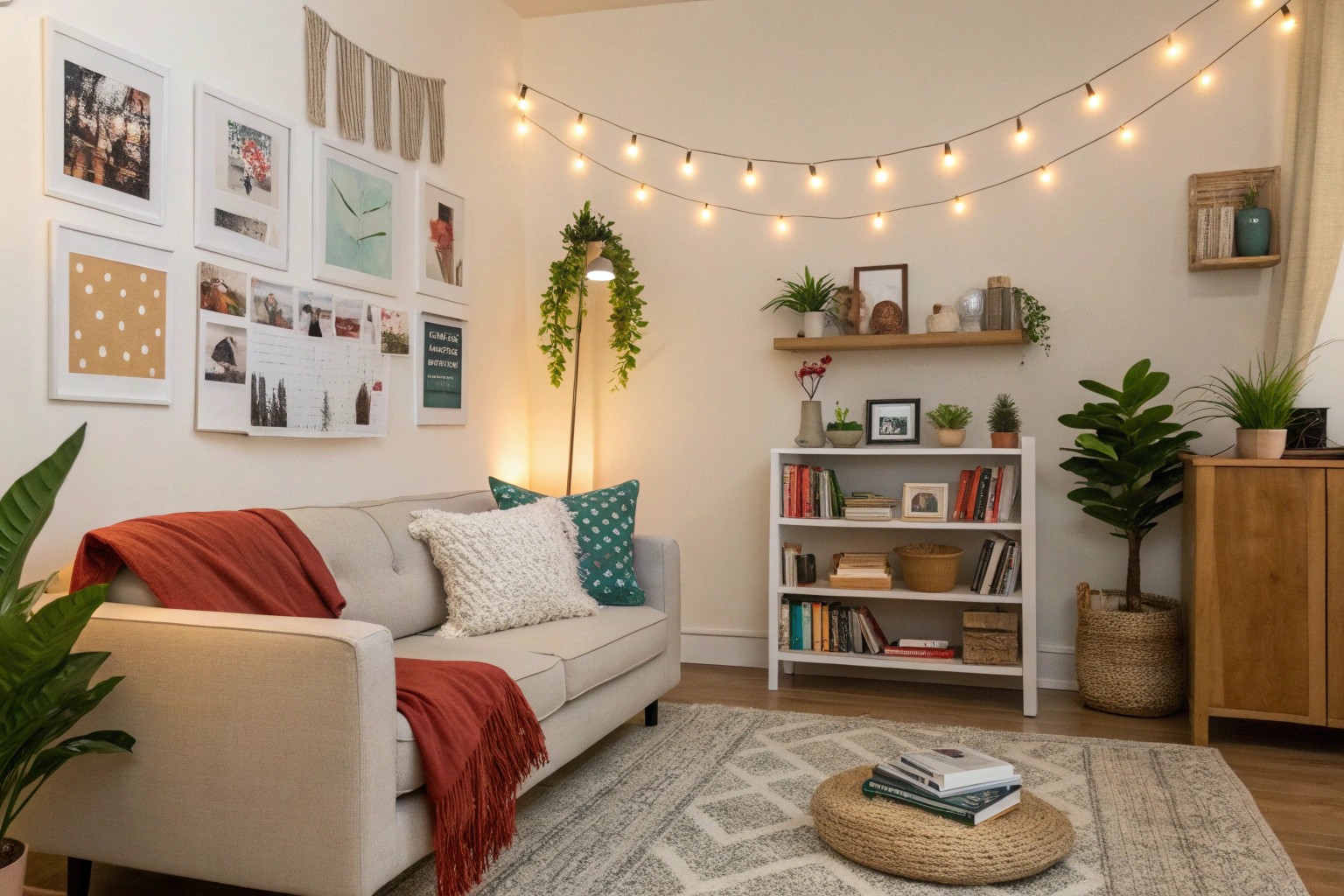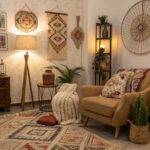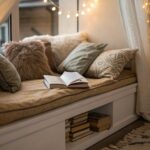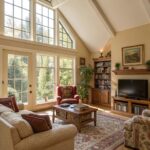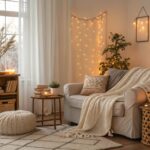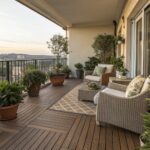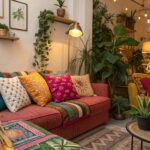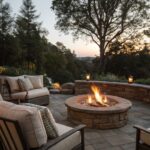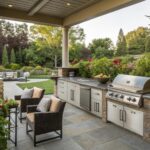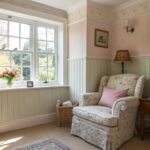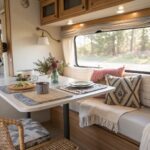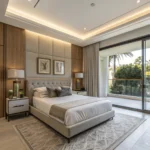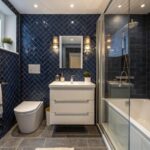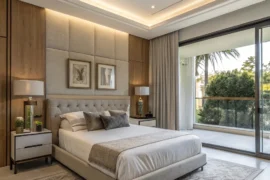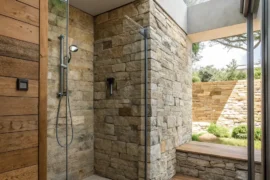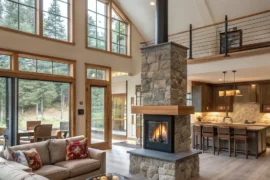When you step into a temporary space—whether it’s a short-term rental, corporate housing, or transitional home—those beige walls and generic furnishings can make it feel more like a hotel than a sanctuary. Yet with thoughtful personalization, even the most standardized space can become a place that feels uniquely yours. This guide will help you transform any temporary dwelling into a home that supports your wellbeing and reflects your identity.
The Psychology of “Home” in Temporary Spaces
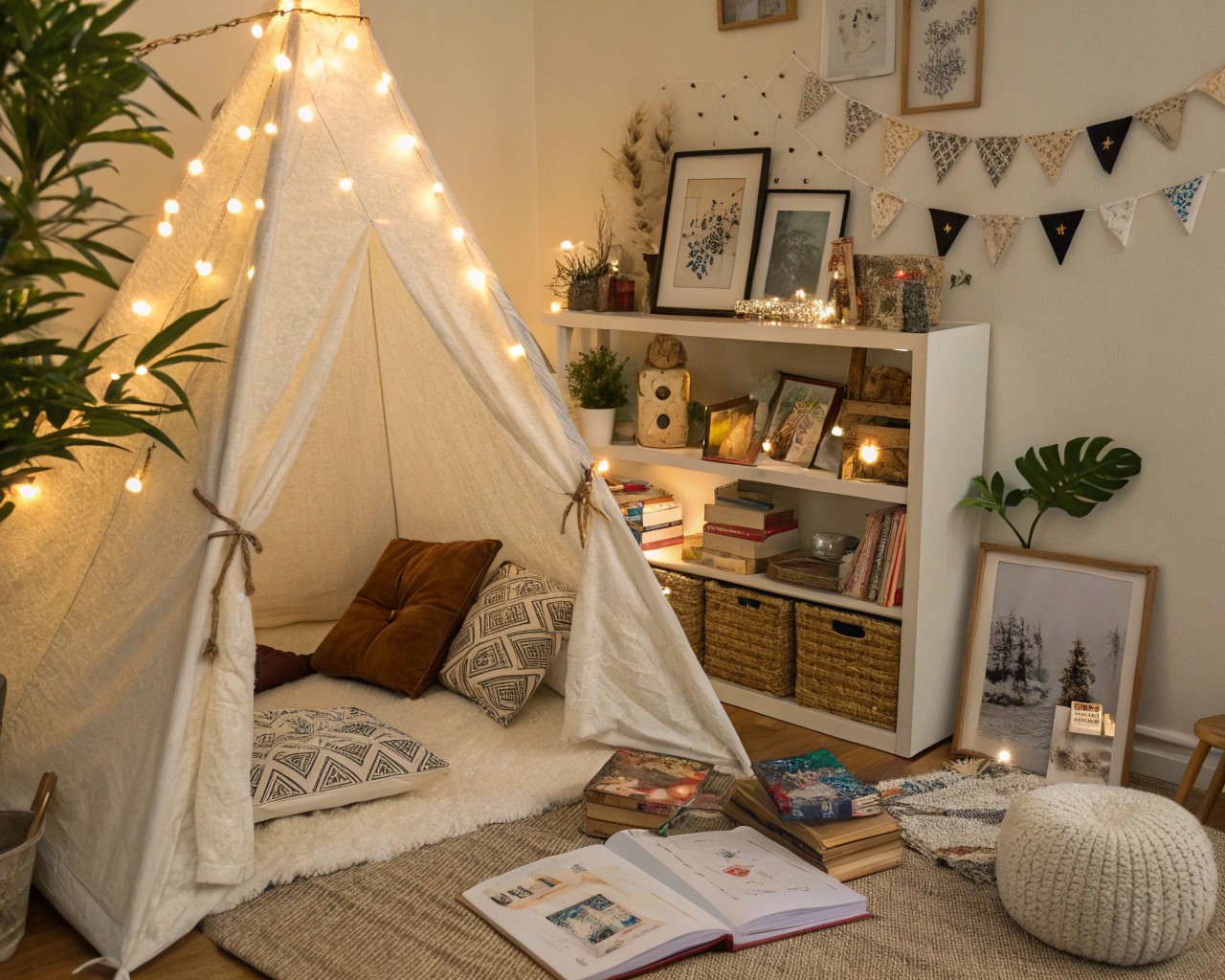
Creating a sense of home isn’t about permanence—it’s about crafting an environment that provides comfort and emotional security. Research from TU Delft confirms that people’s ability to modify their living environment significantly impacts their wellbeing, particularly for those in temporary situations.
I’ve witnessed this transformation countless times with clients. One expatriate explained how acutely they felt the need for a personalized space after just a few weeks in a sterile corporate apartment. This feeling is common in almost all temporary living situations—the faster you personalize your space, the sooner you’ll feel settled.
What Makes a Space Feel Like “Home”
- Personal objects that trigger positive memories
- Sensory elements that provide comfort
- Areas that support your daily rituals
- Features that reflect your personal aesthetic
- Elements that tell your unique story
Quick-Impact Personalization Strategies
Personal Items and Mementos
Nothing transforms a space faster than surrounding yourself with meaningful objects:
- Framed photos of loved ones and special places
- Artwork or prints that inspire positive emotions
- Books that bring comfort or inspiration
- Small keepsakes from your permanent home or travels
I always recommend unpacking these personal items first. A client relocating to Singapore for work immediately replaced the corporate apartment’s generic art with family photos, creating an instant sense of belonging. “That first night felt completely different once we had our people on the walls,” she shared.
Textiles for Instant Warmth
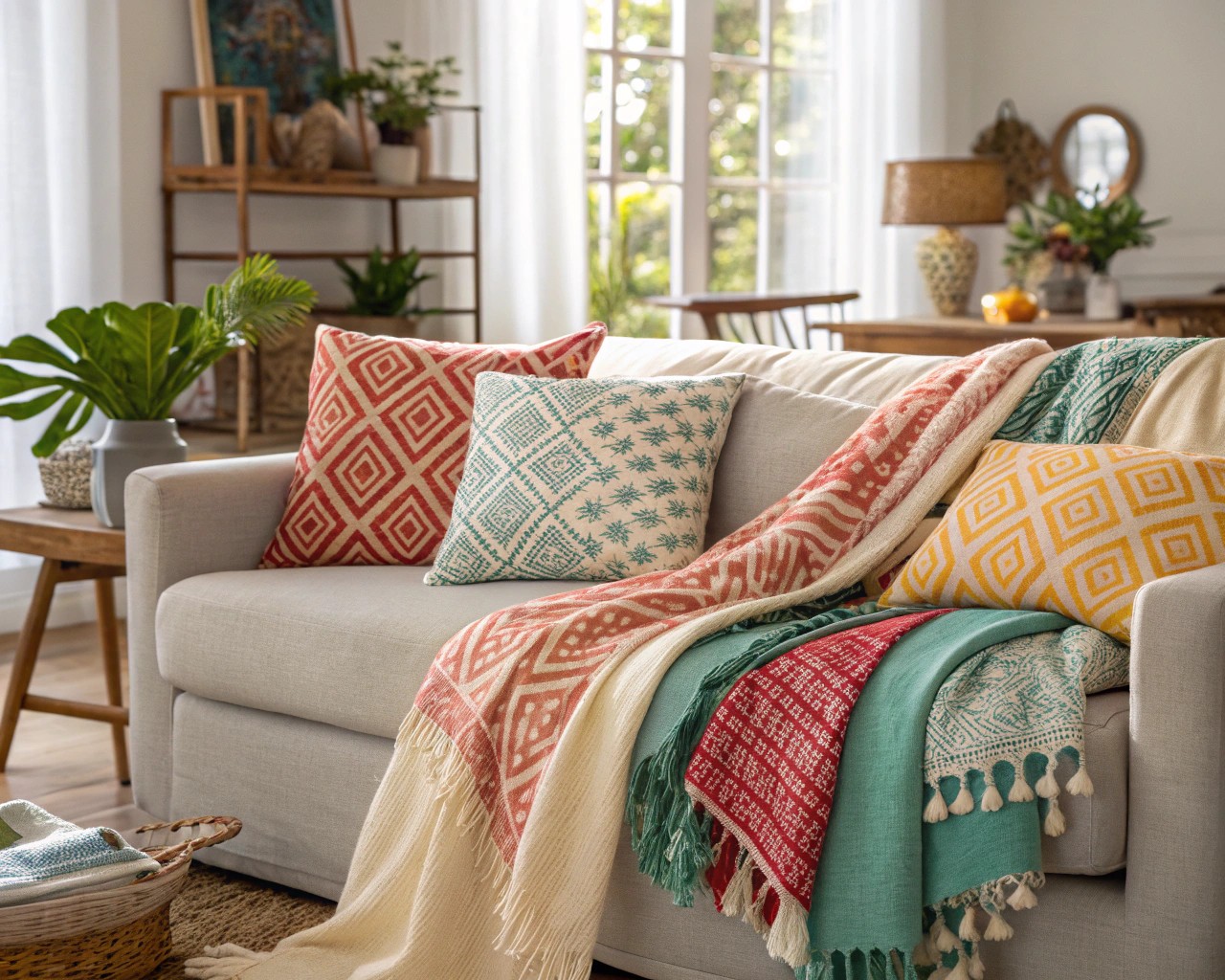
Textiles are perhaps the most transformative elements in temporary housing—they’re portable, relatively inexpensive, and make an immediate impact:
- Throw blankets in colors that make you happy
- Pillow covers to refresh generic furniture
- Area rugs to define spaces and add warmth
- Curtains on tension rods or with removable hooks
One particularly effective strategy is to pack a compact “textile kit” of coordinating pieces that can transform any space upon arrival. A client moving between temporary assignments kept a collection of pillow covers that made each new place feel consistent with her personal style.
Engaging the Senses
Our sense of smell and sound powerfully connect to emotions and memories:
- Familiar scents via candles, diffusers, or room sprays
- Music and ambient sounds through portable speakers
- Textural elements that feel comforting to touch
One expatriate family found that filling their temporary home with music significantly boosted their spirits. Using small Bluetooth speakers to play familiar tunes while cooking or relaxing immediately improved the atmosphere and helped them feel more settled.
Lighting Transformations
Standard temporary housing often features harsh overhead lighting that creates an institutional feel:
- Portable table lamps with warm-toned bulbs
- String lights for ambient illumination
- Floor lamps to create pools of light in specific areas
- Light-filtering curtains to soften natural light
During one project, we transformed a stark corporate apartment simply by unplugging the overhead lights and strategically placing four small table lamps around the living area. The client confirmed that this single change made the space immediately feel more comfortable and homelike.
Space Optimization Strategies for Temporary Homes
Flexible Furniture Solutions
| Need | Traditional Solution | Space-Saving Alternative | Approximate Cost |
|---|---|---|---|
| Guest sleeping | Dedicated guest room | Murphy bed or sleeper sofa | $300-$1,500 |
| Work space | Separate home office | Fold-down desk or convertible table | $100-$500 |
| Dining area | Full dining set | Extendable or drop-leaf table | $200-$800 |
| Storage | Built-in cabinets | Vertical shelving, under-bed solutions | $50-$300 |
| Entertainment | Large media center | Wall-mounted TV, floating shelves | $150-$500 |
Multipurpose furniture creates flexibility in limited spaces. A client’s 600-square-foot temporary apartment became much more functional when we implemented a Murphy bed, allowing the bedroom to double as a home office during working hours.
Creating Distinct Zones
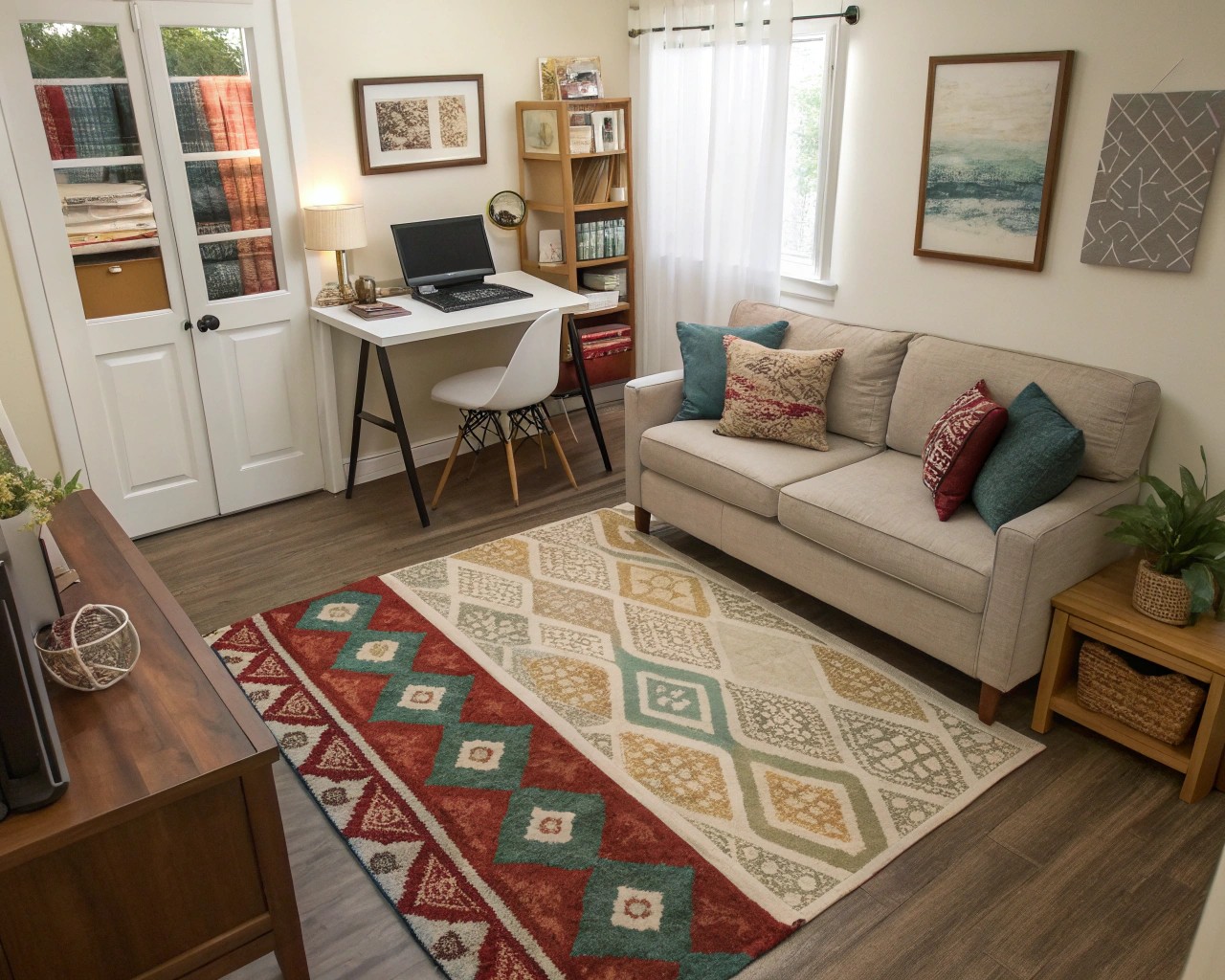
Even in small, open-concept temporary homes, you can create the feeling of separate spaces:
- Use rugs to define different functional areas
- Position furniture to create natural divisions
- Employ decorative screens for visual separation
- Design multiple lighting schemes for different activities
As one digital nomad client observed, properly zoning a small space can make it feel larger. “Having distinct areas for work, relaxation, and sleep makes even a studio apartment feel complete.”
Room-by-Room Personalization Guide
Living Areas
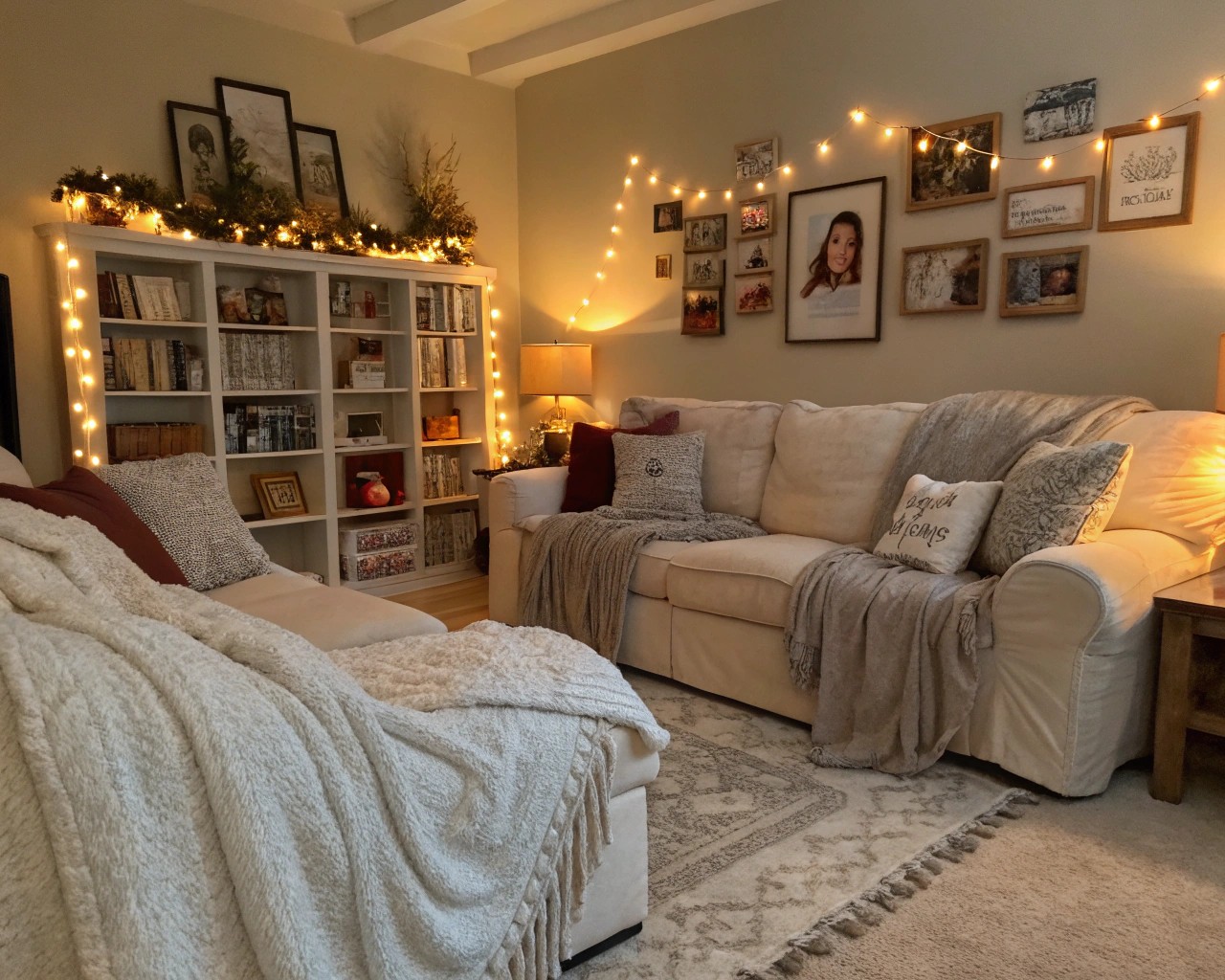
The living room often functions as the heart of any home. Focus on:
- Creating conversation areas with thoughtful furniture arrangement
- Adding layers of lighting rather than relying on overhead fixtures
- Incorporating personal collections on shelves or side tables
- Using textiles to soften and personalize generic furniture
Many temporary living rooms come with basic, neutral furnishings. Simply adding colorful pillow covers, a throw blanket, and a rug can transform these pieces into something that feels more personal and inviting.
Bedrooms
Bedrooms should serve as personal sanctuaries, especially in temporary housing:
- Quality bedding is worth the investment, even for short-term situations
- Bedside lighting creates a more intimate atmosphere than overheads
- Personal photos help create emotional connection
- Blackout curtains on tension rods help control light and privacy
One approach that works well for frequent relocators is creating a “bedding kit”—a complete set of high-quality sheets, pillowcases, and a lightweight duvet cover that travels between assignments, providing consistent comfort regardless of the provided mattress.
High vs. Low Priority Bedroom Items
| High Priority | Why It Matters | Low Priority | Alternative Solution |
|---|---|---|---|
| Mattress/topper | Directly impacts sleep quality | Bedside tables | Stack of books or small folding tray |
| Pillows | Personal preference affects comfort | Dresser | Under-bed storage containers |
| Quality bedding | Creates comfort and aesthetic appeal | Decorative items | One or two meaningful pieces only |
| Window coverings | Controls light and privacy | Bedside lamps | Clip-on reading lights |
Kitchen and Dining

Even in temporary kitchens with limited scope for changes, you can create functionality and personality:
- Bring key cooking tools that make meal preparation feel familiar
- Add a portable kitchen island if workspace is limited
- Use decorative containers to organize and add personality
- Create a dining nook with intentional place settings
While working with a family in corporate housing, we transformed their basic kitchen by simply adding a colorful runner, replacing cabinet hardware temporarily (storing the originals safely), and setting up a coffee station with their own familiar equipment. These small changes made their morning routines feel more like home.
Home Office/Workspace
With remote work becoming increasingly common, creating a functional workspace is essential:
- Proper ergonomic setup to prevent physical discomfort
- Good lighting to prevent eye strain
- Personal items that inspire creativity
- Background considerations for video calls
One digital nomad client created a “portable office kit” containing a laptop stand, compact external keyboard, small desk lamp, and framed photo of their family. This kit allowed them to quickly set up a personalized workspace in any temporary accommodation.
Case Studies: Successful Temporary Home Transformations
The Expatriate Family’s Corporate Apartment
A family relocating to Singapore for a two-year assignment struggled with their sterile corporate housing.
The Approach:
- Created a “wall of friends” using lightweight frames and removable adhesive hooks
- Added textiles in colors that reminded them of their previous home
- Set up a dedicated music station with Bluetooth speakers
- Established distinct zones for family activities
“It was remarkable how quickly it started to feel like home once we had our photos up and our own music playing. The children settled in so much faster than we expected,” the mother shared.
The Multi-Generational Temporary Space
When three generations needed to share a temporary home during a renovation project, they required thoughtful space planning.
The Approach:
- Created private retreats for each generation
- Designed flexible common spaces that could adapt to different activities
- Established clear systems for shared items
- Incorporated personal elements from each family member’s previous home
One participant explained the process involved detailed planning about how each family unit lived separately and how they would function together. Through iterative discussions and lists, they ensured everyone’s needs were considered in the combined household setup.
The Post-Disaster Temporary Housing
Following a natural disaster, a community was housed in temporary structures designed by innovative architects. While the physical structures were well-designed, residents struggled to feel settled.
The Approach:
- Incorporated flexible interior elements that residents could adjust
- Created community input sessions for common area designs
- Provided simple personalization kits with adjustable elements
- Focused on privacy and dignity through thoughtful space division
This case illustrates how even in emergency housing situations, the psychological benefits of personalization cannot be overlooked.
Creating Comfort Without Permanent Changes
One of the biggest challenges in temporary homes is making changes without damaging the property or violating rental agreements.
No-Damage Decorating Solutions
- Command hooks and strips for hanging art and photos
- Tension rods for curtains without drilling
- Peel-and-stick wallpaper for accent walls
- Furniture arrangement to disguise unattractive features
- Leaning larger artwork rather than hanging it
- Contact paper for temporary countertop or cabinet updates
- Area rugs to cover unappealing flooring
- Lampshades to transform existing light fixtures
For one client in a temporary apartment with strict rules against wall modifications, we created a dramatic backdrop by installing a tension rod near the ceiling and hanging floor-length curtains to create the illusion of a feature wall. The fabric added color, texture, and acoustic benefits without a single nail or screw.
Balancing Investment in Temporary Spaces
When furnishing a temporary home, determining where to invest versus where to economize is crucial:
Investment Guide: Where to Spend vs. Save
| Category | Worth Investing | Budget-Friendly Approach | Packability Factor |
|---|---|---|---|
| Bedding | High-quality sheets, pillows | Choose neutral colors that work across spaces | High (compress in vacuum bags) |
| Lighting | Good portable lamps | Battery-operated options reduce cord management | Medium (choose collapsible shades) |
| Kitchen | Essential cooking tools | Multi-functional items only | Low (heavy and bulky) |
| Decor | 2-3 special pieces | Locally sourced items at each location | Varies |
| Technology | Quality portable speakers | Small bluetooth units vs. large systems | High (compact options available) |
I advise clients to follow the “80/20 rule” for temporary homes: invest in the 20% of items that provide 80% of your comfort, and find budget-friendly solutions for the rest.
Adapting to Local Styles While Maintaining Identity
A temporary home presents an opportunity to experience new design aesthetics while maintaining personal comfort:
- Visit local markets for 1-2 signature pieces that represent the regional style
- Incorporate local textiles that can later become souvenirs
- Adapt to local color palettes while maintaining personal style elements
- Learn about local design traditions and thoughtfully incorporate resonant elements
One expatriate family I worked with made it a tradition to add one locally-made item to their “permanent collection” from each temporary home, creating a meaningful narrative of their journey through their possessions.
Psychological Benefits of Personalized Spaces
The effort to personalize temporary spaces yields significant psychological benefits:
- Reduced stress and anxiety
- Improved sleep quality
- Enhanced ability to focus and be productive
- Stronger sense of stability during transition
- Greater overall life satisfaction
Creating rituals and routines within your personalized space further enhances these benefits. Whether it’s a dedicated coffee corner for morning reflection or a comfortable reading nook for evening unwinding, these intentional spaces support emotional well-being during transitional periods.

